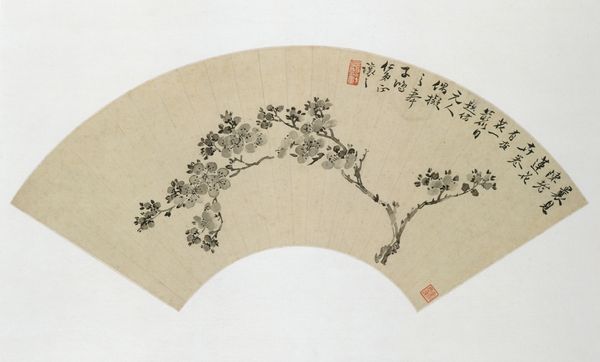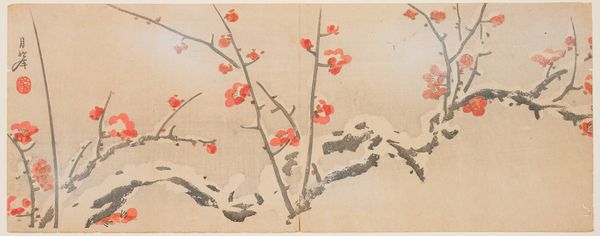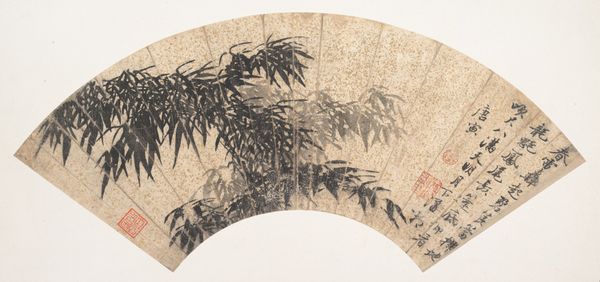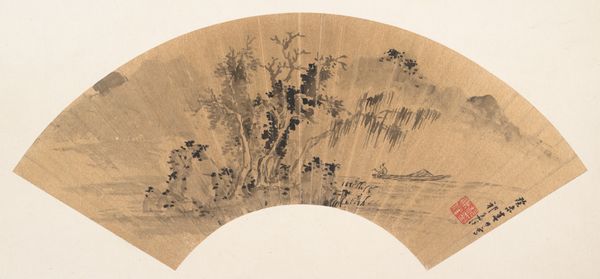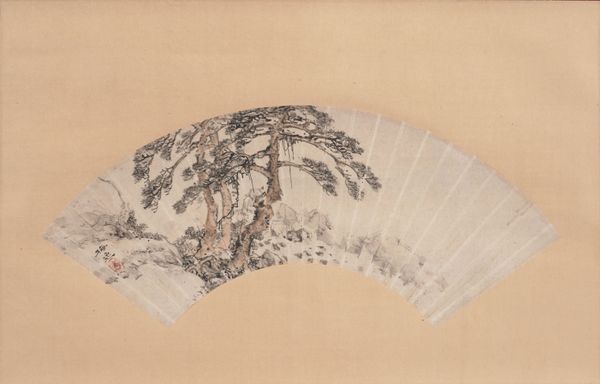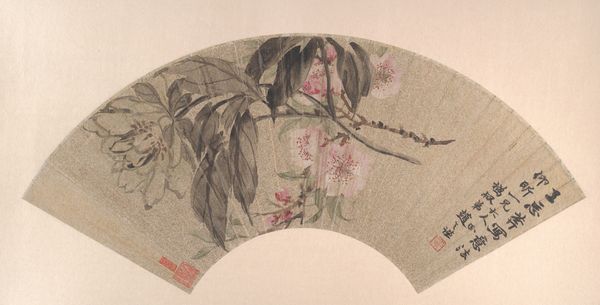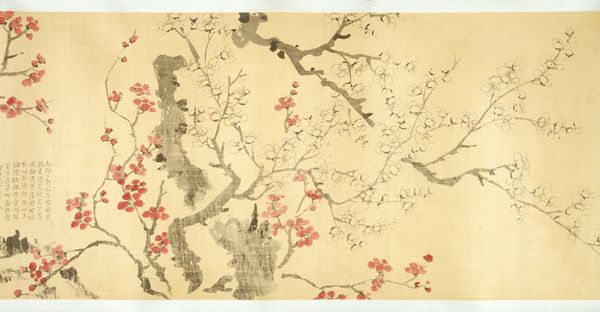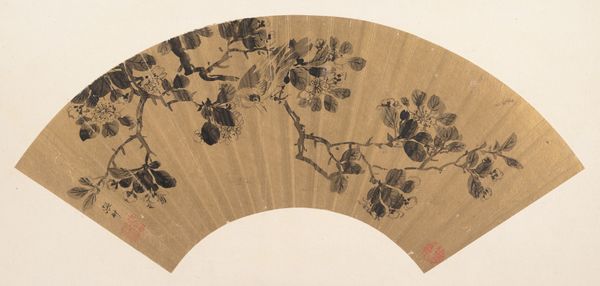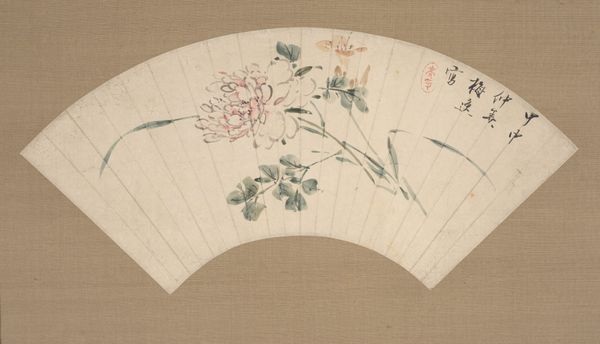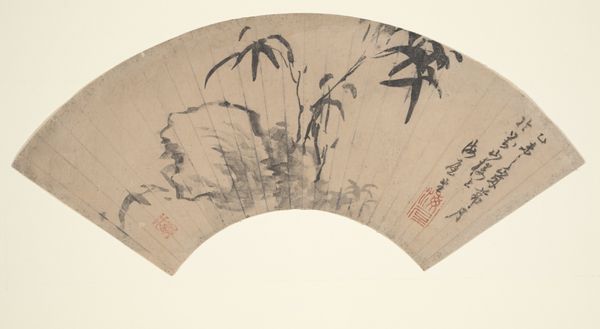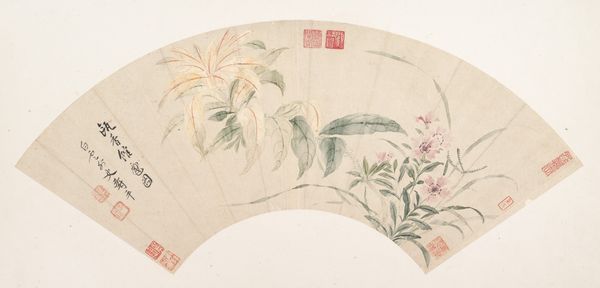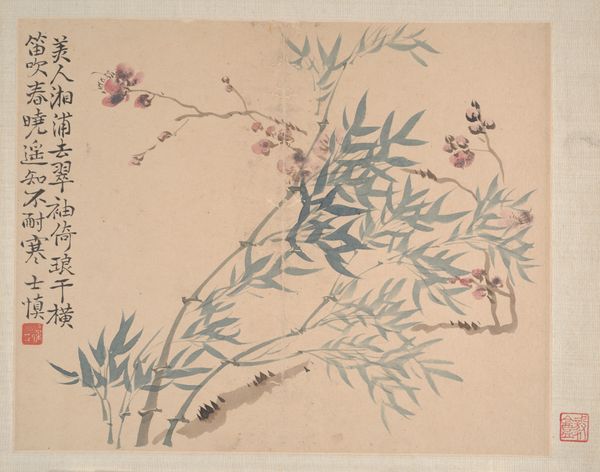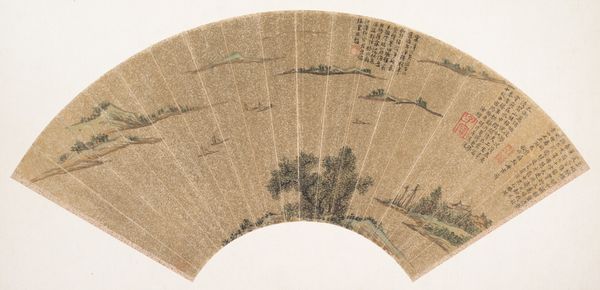
painting, paper, watercolor
#
water colours
#
painting
#
asian-art
#
landscape
#
figuration
#
paper
#
watercolor
#
calligraphy
Dimensions: 6 1/2 x 19 3/4 in. (16.5 x 50.2 cm)
Copyright: Public Domain
Curator: Here we have Wen Zhi’s "Plum Blossoms," created around 1670. It’s currently held here at the Metropolitan Museum of Art. Editor: There’s something quite fragile about this fan painting. I’m immediately drawn to how delicate the washes of watercolor on paper must be to create that effect of aged ivory and barely-there blooms. Curator: Absolutely, and consider the context of its creation. The late Ming and early Qing dynasties were times of upheaval. Literati artists like Wen often used the plum blossom as a symbol of resilience. Their beauty emerges even in winter's harshest conditions. This artwork subtly reflects societal values of that time. Editor: Yes, that’s fascinating, and it also begs the question: How do the materials contribute to this message? The absorbency of the paper, the fluidity of watercolor— these allow for a certain spontaneity. One can imagine the artist working quickly to capture the ephemeral nature of the blossoms and the season itself. I imagine this would feel precious due to the material costs. Curator: The format itself – a fan – also invites interesting considerations. Fans were both functional and artistic objects, often commissioned and exchanged among the educated elite, further indicating that painting's accessibility in terms of artistry and value within that community. They served not just as adornment but also facilitated social exchanges. Editor: Right, so not merely decorative but imbued with labor and embedded within social relations of use and exchange. We have to imagine the making and its place within that complex historical dynamic of both material and cultural meaning making, especially during turbulent times. Curator: Precisely. Considering that, our reading of its gentle surface evolves. It goes beyond simply portraying pretty blossoms to something charged with significance. Editor: Definitely. It makes me think differently about the embodied energy of creation, you know, a way of considering process to enhance value both culturally and materially. Curator: Indeed. Thank you, these combined insights grant us an enriched perception of the art piece. Editor: Likewise, I leave here admiring this piece's gentle rebellion; what a fascinating contrast!
Comments
No comments
Be the first to comment and join the conversation on the ultimate creative platform.
